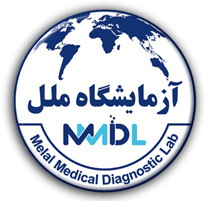- Dermatitis Herpetiformis
Definition
Dermatitis herpetiformis (DH) is an unusual autoimmune cutaneous eruption related to gluten sensitivity. Affected patients commonly develop intensely pruritic inflammatory papules and vesicles on the forearms, knees, scalp, or buttocks. The majority of patients with DH have an associated gluten-sensitive enteropathy (celiac disease) as well. In most of these patients, the enteropathy is asymptomatic.
Panel test
- Immunogenetics:
- Increased incidence of HLA-A1/B8/DR3/DQw2 and associated organ- specific autoimmune disease.
- Immunopathology:
- DIF on the skin biopsy shows typical granular IgA deposits on the dermal
- Jejunal/duodenal biopsies will often show features of coeliac disease even in the absence of clinical
- Autoantibodies:
- IgA endomysial or tissue transglutaminase antibodies will be positive.
comments: Gluten-free diet will eventually lead to resolution of the rash.
Resistant cases may require treatment with dapsone, having first excluded G6PD deficiency (monitor all patients for haemolysis and methaemoglobinaemia.
References:
Definition:
Epidermolysis bullosa acquisita (EBA) is could be an uncommon, sporadic, subepithelial, mucocutaneous blistering disease that mostly establishes in adulthood. EBA is classically illustrated as a mechanobullous disorder defined by skin fragility, noninflammatory tense bullae, milia, and scarring. Alternatively, EBA can exist as an inflammatory bullous eruption remindful of bullous pemphigoid or other subepithelial autoimmune blistering diseases.
Panel test
- Immunogenetics:
- Increased prevalence of HLA-DR2.
- Immunopathology:
- DIF shows linear staining with IgG and C3 of the basement membrane, but this is not
- On split-skin preparations the antibody is seen to localize to the dermal
- IIF may also be positive.
- Autoantibodies:
- Collagen type VII antibody, IgG
This test is helpful for initial diagnosis and disease follow up of EBA.
References:
Definition:
Linear IgA bullous dermatosis (LABD), also known as linear IgA disease, is a rare, idiopathic or drug-induced autoimmune blistering disease described by the linear deposition of IgA at the dermoepidermal junction. In spite of the clinical manifestation of this disorder is difficult to diagnose from dermatitis herpetiformis, the different immunopathologic findings in LABD and the lack of an associated gluten-sensitive enteropathy approbate the status of LABD as a separate disease.
Panel test:
- Immunopathology:
- DIF shows linear (rather than granular) IgA deposition along the basement membrane, and a 97kDa antigen (LAD-1) has been detected in most
- Autoantibodies:
- Antibody against to a domain of the BPAg2 antigen (180kDa).
References:
- Fortuna G, Marinkovich MP. Linear immunoglobulin A bullous dermatosis. Clin Dermatol 2012; 30:38.
- Mintz EM, Morel KD. Clinical features, diagnosis, and pathogenesis of chronic bullous disease of childhood. Dermatol Clin 2011; 29:459.
- Gluth MB, Witman PM, Thompson DM. Upper aerodigestive tract complications in a neonate with linear IgA bullous dermatosis. Int J Pediatr Otorhinolaryngol 2004; 68:965.
- Zhao CY, Chiang YZ, Murrell DF. Neonatal Autoimmune Blistering Disease: A Systematic Review. Pediatr Dermatol 2016; 33:367.
Definition:
Paraneoplastic pemphigus (PNP) is an often lethal paraneoplastic mucocutaneous blistering disease that is most commonly cause by lymphoproliferative disorders [1]. Paraneoplastic autoimmune multiorgan syndrome (PAMS) is another term used to point to PNP. This term resounds the inclusion of the nonbullous cutaneous eruptions and pulmonary involvement that may develop within the setting of PNP (4).
Panel test:
- Immunogenetics:
- PNP was related with the DRB1*03 allele and HLA-Cw*14 alleles.
- Immunopathology:
- DIF shows IgG and C3 deposition, both in the intercellular substance and along the basement
- Autoantibodies:
- Autoantigens are desmosomal proteins, desmoplakin I and II, desmogleins 1 and 3, and possibly other antigens (230kDa BPAg1, envoplakin, plectin, and periplakin)
References:
- Kaplan I, Hodak E, Ackerman L, et al. Neoplasms associated with paraneoplastic pemphigus: a review with emphasis on non-hematologic malignancy and oral mucosal manifestations. Oral Oncol 2004; 40:553.
- Ohzono A, Sogame R, Li X, et al. Clinical and immunological findings in 104 cases of paraneoplastic pemphigus. Br J Dermatol 2015; 173:1447.
Definition:
Bullous pemphigoid and mucousa membrane pemphigoid (MMP) are autoimmune blistering diseases that commonly arise in the older adults. These disorders are characterized by subepithelial blister formation and also percipitation of immunoglobulins and complement in the epidermal and/or mucosal basement membrane zone.
Although both bullous pemphigoid and MMP may affect skin and mucosa, the classical clinical manifestations in bullous pemphigoid are tense, fluid-filled bullae on skin whereas the prevailing clinical feature in MMP is mucosal involvement. In MMP, inflamed and eroded mucosa is characteristic, involving any or all of the oral cavity, ocular conjunctiva, nose, pharynx, larynx, esophagus, anus, and genital mucous membranes.
Panel test:
- Immunopathology:
- Cutaneous Direct Immunoflourescence, Biopsy
- Cutaneous DIF
- EER cutaneous DIF
Note: DIF includes IgG, IgG4, IgM, IgA, C3, and fibrinogen with diagnostic interpretation of staining patterns
Comments: DIF and IIF show mainly linear IgG and C3 at the dermo-epidermal junction, binding to the epithelial side of the basement membrane (on a saline-split preparation). Rate of positivity in DIF is up to 90% and for IIF up to 70%.
- Immunogenetics
- Increased prevalence of HLA DQB1*0301.
Autoantibodies:
- Two autoantigens have been identified:
- BPAg1, 230kDa (chromosome 6)
- BPAg2, 180kDa (chromosome 10).
Comments: BPAg1 is like to desmoplakin I and is likely to form part of the hemi-desmosome, which provides the major site of attachment between the internal cytoskeletal proteins and the external matrix. Antibodies to BPAg1 are only detect in bullous pemphigoid. BPAg2 is also a hemi-desmosomal protein, but antibodies are also detecting in herpes gestationis.
References:
Definition:
The dermatoses of pregnancy are various group of pruritic inflammatory dermatoses that be found particularly during pregnancy and/or in the immediate postpartum period. These include the these conditions, which are Pemphigoid gestationis, Polymorphic eruption of pregnancy (pruritic urticarial papules and plaques of pregnancy [PUPPP]), Atopic eruption of pregnancy (eczema in pregnancy, prurigo of pregnancy, pruritic folliculitis of pregnancy), Intrahepatic cholestasis of pregnancy (see “Intrahepatic cholestasis of pregnancy”), Pustular psoriasis of pregnancy.
Panel test:
- Immunogenetics
- Associated with HLA-DR3 and DR4.
- C4 null alleles
- Immunopathology
- Pathology shows the presence of eosinophils, which may be accompanied by a peripheral blood eosinophilia.
- Staining on immuno-EM is localized to the epithelial lamina
- IIF is positive in only 30% of patients.
- Therefore, biopsy with DIF is the diagnostic test of choice.
- Autoantibodies:
- anti BPAg2 Ag autoantibody
Comments: DIF shows linear deposits of C3 at the dermo-epidermal junction in almost all cases, with IgG in up to 50%.
References:
- Baum S, Sakka N, Artsi O, et al. Diagnosis and classification of autoimmune blistering diseases. Autoimmun Rev 2014; 13:482.
- Chan LS, Ahmed AR, Anhalt GJ, et al. The first international consensus on mucous membrane pemphigoid: definition, diagnostic criteria, pathogenic factors, medical treatment, and prognostic indicators. Arch Dermatol 2002; 138:370.
- Marazza G, Pham HC, Schärer L, et al. Incidence of bullous pemphigoid and pemphigus in Switzerland: a 2-year prospective study. Br J Dermatol 2009; 161:861.
- Schmidt E, della Torre R, Borradori L. Clinical features and practical diagnosis of bullous pemphigoid. Dermatol Clin 2011; 29:427.
- Pemphigus vulgaris
Definition:
Pemphigus is characterized as a group of lethal blistering disorders defined by acantholysis (loss of keratinocyte to keratinocyte adhesion) that leads to the formation of intraepithelial blisters in mucous membranes and skin. The progress of acantholysis is induced by the attaching of circulating immunoglobulin G (IgG) autoantibodies to intercellular adhesion molecules. Patients with pemphigus develop mucosal erosions and/or flaccid bullae, abrasion, or furuncle on skin. The four main forms of the pemphigus group include pemphigus vulgaris, pemphigus foliaceus, immunoglobulin A (IgA) pemphigus, and paraneoplastic pemphigus. The other forms of pemphigus are determined by their clinical features, associated autoantigens, and laboratory results.
Panel Test:
- Immunogenetics:
- HLA-A10, HLA-DR4/DQw3 (DRB1*0402), DR6/DQw1 (DQB1*0503).
- Immunopathology:
- DIF on skin biopsies shows the deposition of IgG and C3 in the intercellular spaces of the epidermis, giving a chicken-wire appearance, in almost all
- IIF on monkey oesophagus gives a similar pattern in >90% of
- Diagnosis requires both DIF on a suitable biopsy and IIF on
Comments: Low titres of serum antibodies giving a similar staining pattern have been reported in SLE, myasthenia gravis with thymoma, burns, and some cutaneous infections (leprosy).
- Autoantibodies:
- anti Desmoglein-3 antibody (Dsg-3): Some patients also have antibodies to desmoglein-1 (Dsg-1).
Comment: A rare form of pemphigus, with a characteristic neutrophilic infiltrate, has been described in which the antibody is IgA and the autoantigens are desmocollin I and II, components of the desmosome. The DIF shows a chicken-wire staining pattern, located in the basal layers only with anti-IgA antiserum.
References
- Bystryn JC, Rudolph JL. Pemphigus. Lancet 2005; 366:61.
- Grando SA. Pemphigus autoimmunity: hypotheses and realities. Autoimmunity 2012; 45:7.
- Baum S, Sakka N, Artsi O, et al. Diagnosis and classification of autoimmune blistering diseases. Autoimmun Rev 2014; 13:482.
- Amagai M. Pemphigus. In: Dermatology, 3rd ed, Bolognia JL, Jorizzo JL, Schaffer JV, et al (Eds), Elsevier, 2012. Vol 1, p.461.


